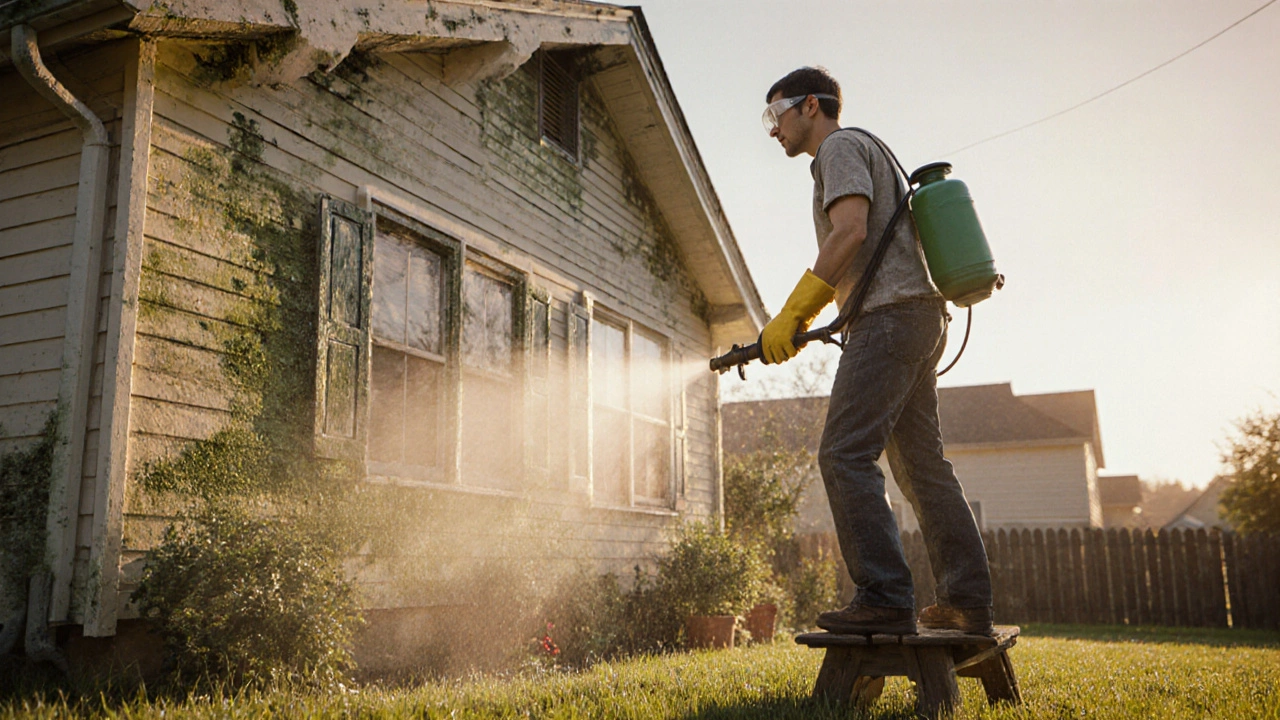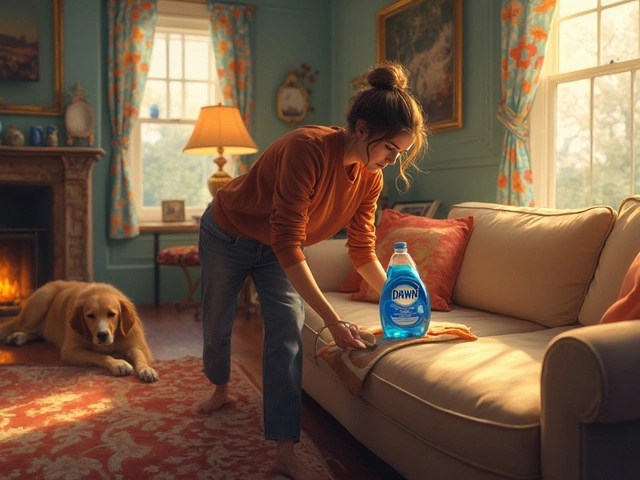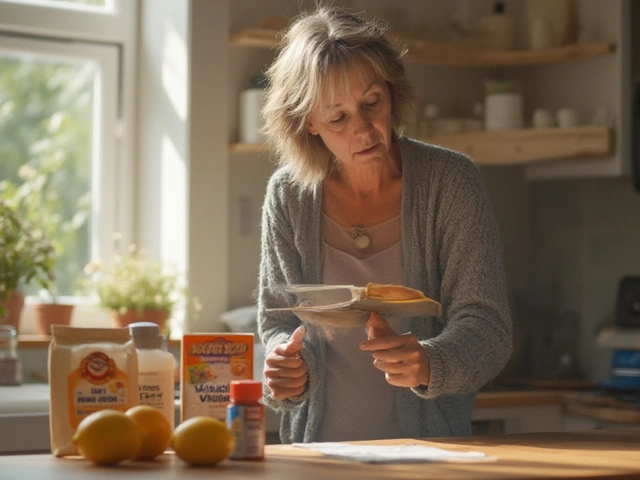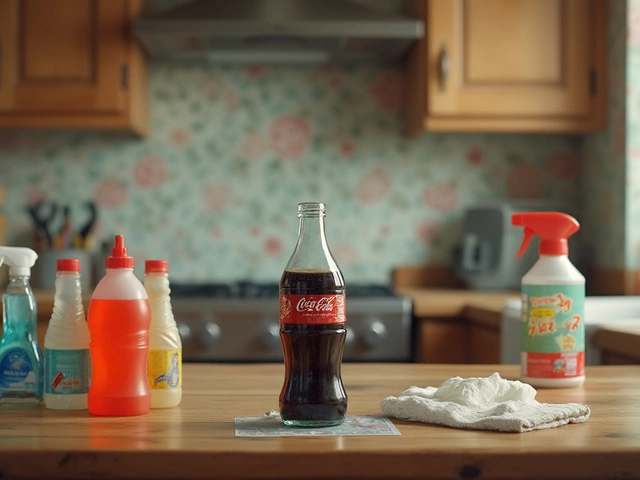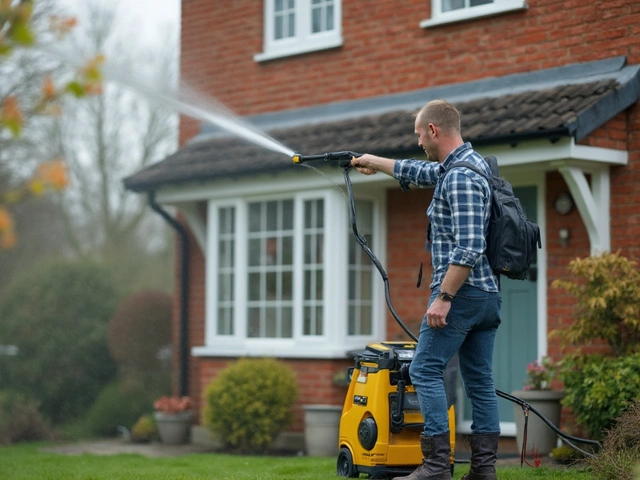Pre-Wash Spray Selector
Select your exterior material and surface type, then click "Find Recommended Pre-Wash Spray" to get personalized recommendations.
Chemical Information
Sodium Hypochlorite
Bleaches mold, mildew, and algae. Highly alkaline (pH 10-12). Use with caution around plants.
Sodium Hydroxide
Degreases heavy oil or grease stains. Very alkaline (pH 13-14). Extremely caustic - requires eye protection.
Oxalic Acid
Removes rust stains and tannin discoloration on wood. Acidic (pH 1-2). Rinse thoroughly after use.
Surfactant Blend
General dirt and dust removal. Near neutral pH (7-9). Eco-friendly and safe for most surfaces.
Before you fire up the pressure washer, the secret to a spotless façade is what you spray on first. The right pre‑wash spray loosens grime, kills mold, and protects paint so the high‑pressure water does the heavy lifting without damaging anything.
Why a Pre‑wash Is Essential
Skipping the pre‑wash is like trying to scrub a greasy pan with water alone - you’ll just spread the dirt around. A good pre‑wash spray softens stubborn stains, breaks down organic growth, and reduces the amount of force needed, which protects delicate surfaces such as painted wood or vinyl siding.
In addition, many modern cleaners contain surfactants that lower surface tension, letting water penetrate crevices more effectively. The result is a more uniform clean and less risk of streaks.
Common Pre‑wash Chemicals and Their Jobs
Below is a quick rundown of the most widely used chemicals for residential pressure washing. Each has a specific strength, so matching the product to your house’s material is key.
| Chemical | Typical Use | pH Level | Eco Rating | Safety Notes |
|---|---|---|---|---|
| Sodium hypochlorite | Bleaching mold, mildew, and algae | 10‑12 (highly alkaline) | Low (chlorine‑based) | Wear gloves, mask; avoid garden plants |
| Sodium hydroxide | Degreasing heavy oil or grease stains | 13‑14 (very alkaline) | Medium | Highly caustic - use eye protection |
| Oxalic acid | Removing rust stains and tannin discoloration on wood | 1‑2 (acidic) | Medium | Rinse thoroughly; avoid prolonged skin contact |
| Biodegradable surfactant blend | General dirt, dust, and pollen removal | 7‑9 (near neutral) | High (plant‑safe) | Generally safe; still wear gloves |
| Mildew remover (enzymatic) | Targeted mold and mildew on shaded areas | 5‑7 | High | Low irritation; follow dilution guide |
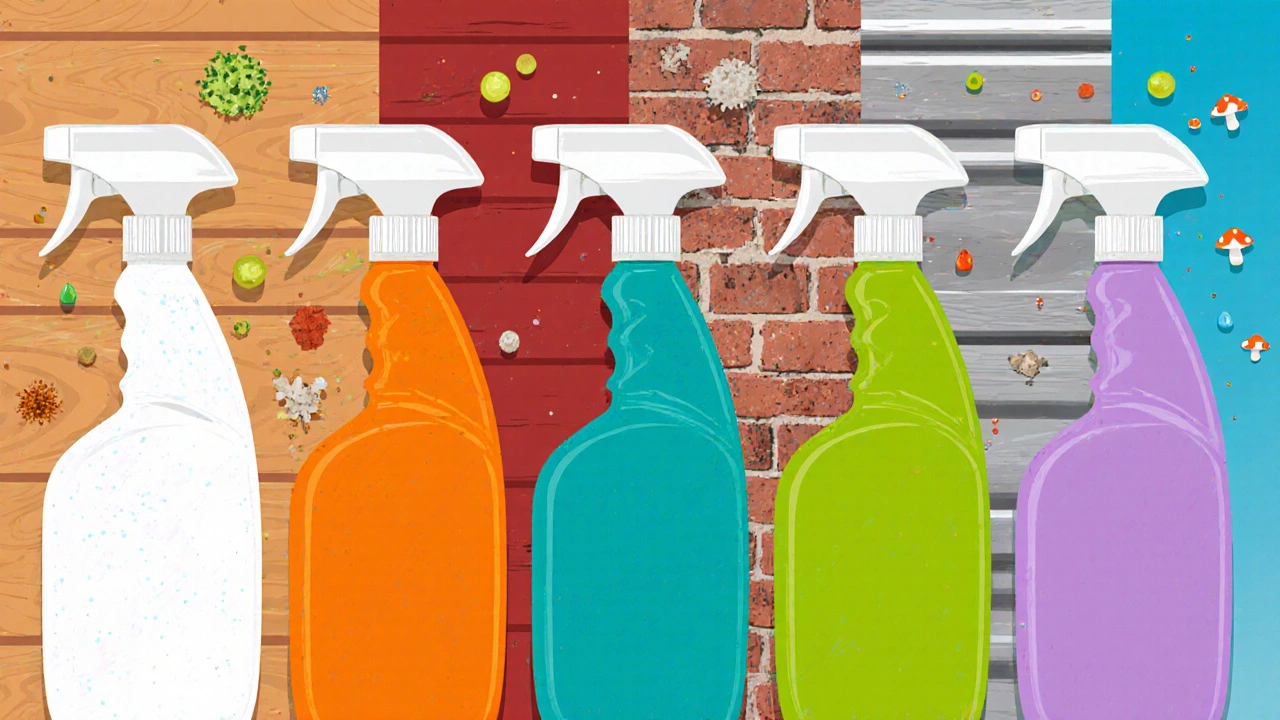
Matching the Spray to Your Home’s Exterior
Every façade material reacts differently to chemicals. Here’s a quick guide:
- Painted wood or siding: Use a mild surfactant blend or a diluted sodium hypochlorite (1:10). Avoid strong alkalis that can strip paint.
- Vinyl siding: A neutral‑pH biodegradable surfactant works best. Strong acids or bases can cause cracking.
- Brick or stone: Sodium hypochlorite at a low concentration removes algae without etching the mortar.
- Aluminum or metal trim: Stick to a gentle surfactant; high‑pH cleaners can cause corrosion.
When in doubt, test a small hidden area first and wait 10‑15 minutes to see if the colour changes.
How to Apply a Pre‑wash Spray Safely
Follow these steps for a trouble‑free prep:
- Read the label and note the recommended dilution ratio. Most products list “Xml per litre of water.”
- Wear protective gear: rubber gloves, goggles, and a mask if you’re using chlorine‑based cleaners.
- Fill a pump‑up sprayer or garden hose‑attached nozzle with the mixed solution.
- Start at the lowest point of the house and work upward. This prevents drips from carrying cleaner over already‑treated areas.
- Apply an even coat, keeping the spray at a 12‑inch distance from the surface. For stubborn spots, let the solution dwell for 5‑10 minutes.
- Rinse lightly with a low‑pressure setting before you switch on the pressure washer. This avoids chemical runoff that can damage nearby plants.
- Proceed with the pressure washer using the appropriate nozzle (usually 25° for general cleaning, 40° for delicate surfaces).
Tip: If you’re using a pressure washer with a heated water option, set the temperature around 120°F to help the cleaner work faster.
Eco‑Friendly Pre‑wash Options
Many homeowners in Leeds are keen on reducing chemical impact on the garden. Look for products that advertise “plant‑safe,” “biodegradable,” or have a third‑party eco certification.
Typical eco‑friendly ingredients include citric acid, potassium gluconate, and natural surfactants derived from coconut or corn. While they may need a slightly longer dwell time (10‑15 minutes), they’re gentle on surrounding flora and safe for pets.
If you want a DIY mix, combine 1cup of white vinegar, 1tbsp of baking soda, and a litre of warm water. This creates a mildly acidic solution that lifts mildew without harming most surfaces.
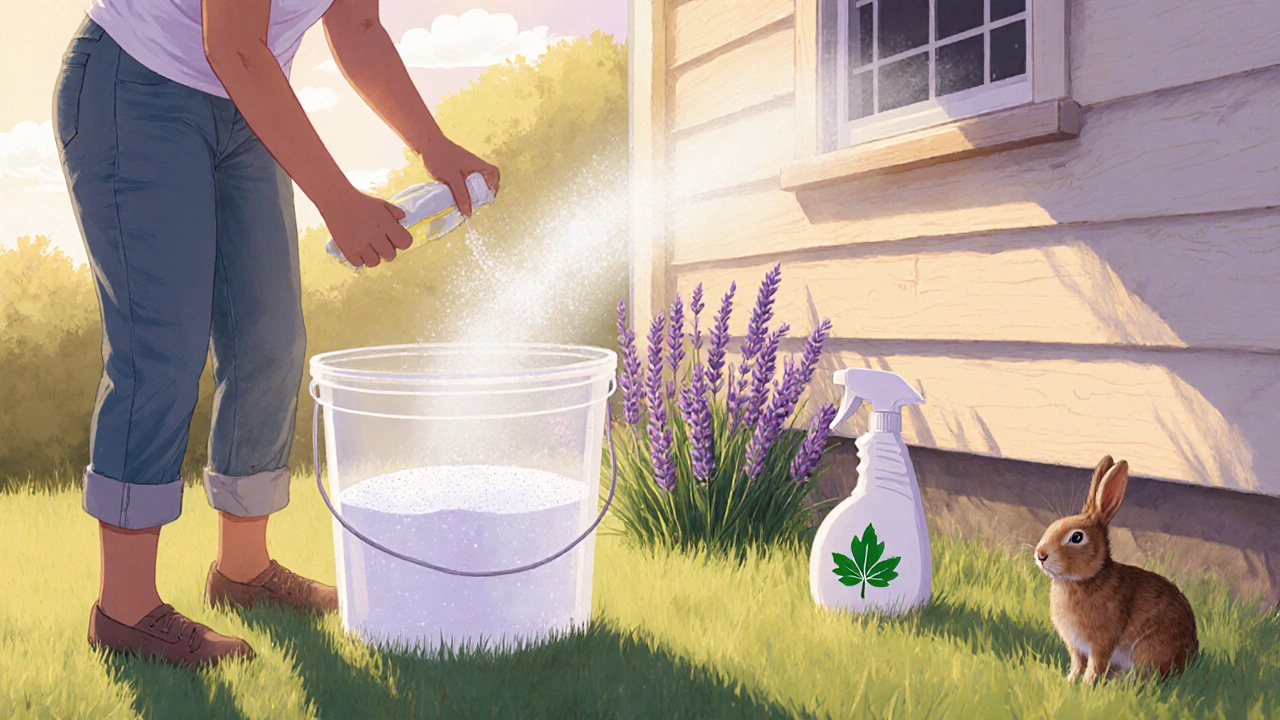
Common Pitfalls & How to Fix Them
- Over‑dilution: If the spray is too weak, grime won’t lift. Re‑mix according to the label and re‑apply.
- Skipping the dwell time: Rushing the cleaning process reduces effectiveness. Set a timer for each area.
- Using the wrong pH: Acidic cleaners on alkaline‑treated surfaces can cause streaks. Match the pH to the material.
- Rinsing too early: Water can wash away the chemical before it works. Wait the full dwell period.
- Applying under direct sunlight: The heat can cause the solution to dry before rinsing, leaving residues. Work in the early morning or late afternoon.
Quick Checklist Before You Start
- Identify exterior material (paint, vinyl, brick, metal).
- Choose the appropriate pre‑wash chemical from the comparison table.
- Gather safety gear - gloves, goggles, mask.
- Mix the solution at the correct dilution.
- Test a hidden spot for colour change.
- Apply spray from bottom to top, respect dwell time.
- Rinse lightly before pressure washing.
- Adjust pressure washer nozzle based on surface delicacy.
Frequently Asked Questions
Can I use regular dish soap as a pre‑wash?
Dish soap creates lots of suds but lacks the surfactants needed to break down outdoor grime and mold. It may work for light dust, but for effective house cleaning a dedicated pre‑wash spray is far better.
Is sodium hypochlorite safe for my garden?
At the recommended dilution (usually 1:10), it’s safe for the plant roots if you rinse the runoff quickly. Avoid direct spray onto foliage and keep pets away until the area dries.
How long should I let the pre‑wash sit?
For most surfactant blends, 5‑7 minutes is enough. Chlorine‑based cleaners benefit from a 10‑15 minute dwell. Always follow the product label.
Do I need a pressure washer with a heated pump?
Heat helps the chemical work faster, especially on oil‑based grime. If you have a cold‑water unit, you can extend the dwell time by a few minutes.
What’s the most eco‑friendly pre‑wash for a painted façade?
A biodegradable surfactant blend with a neutral pH is ideal. Look for certifications like UK Eco‑Label, and avoid chlorine or strong alkalis.
